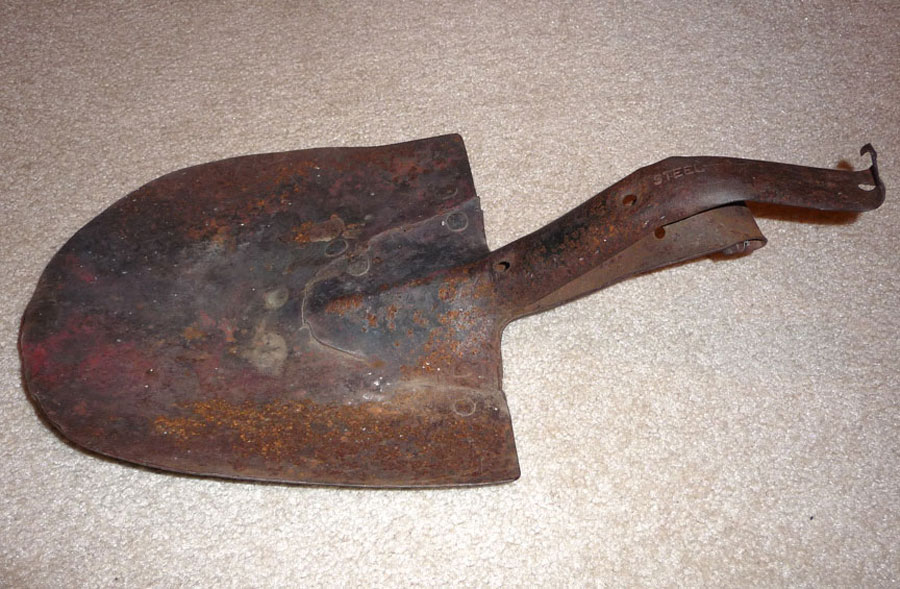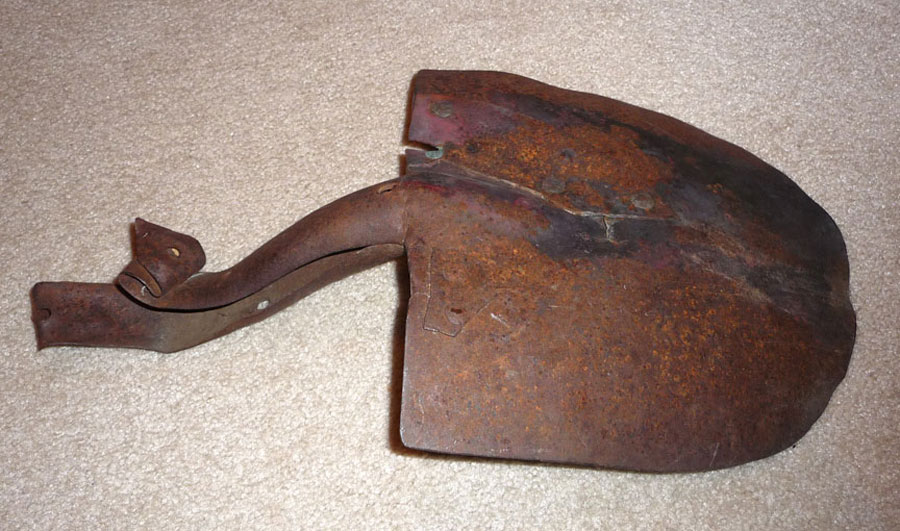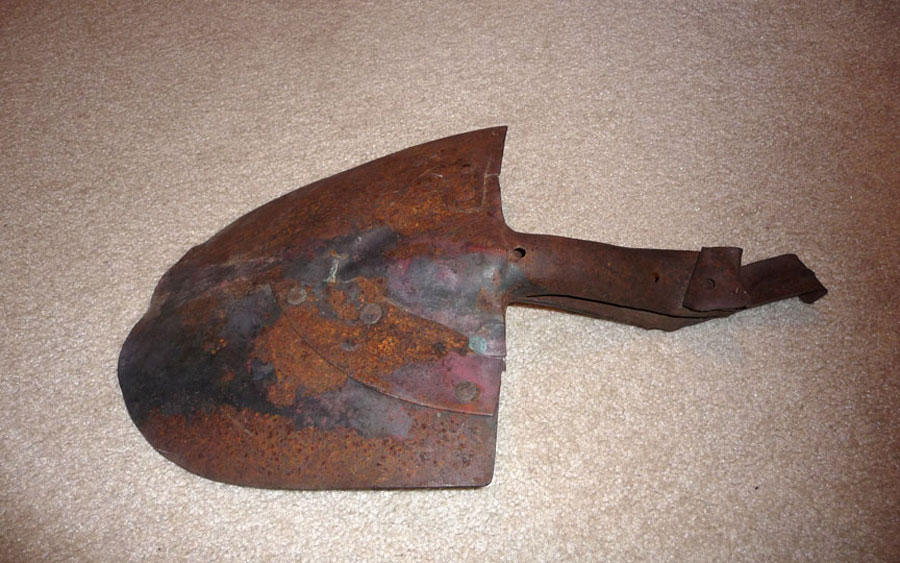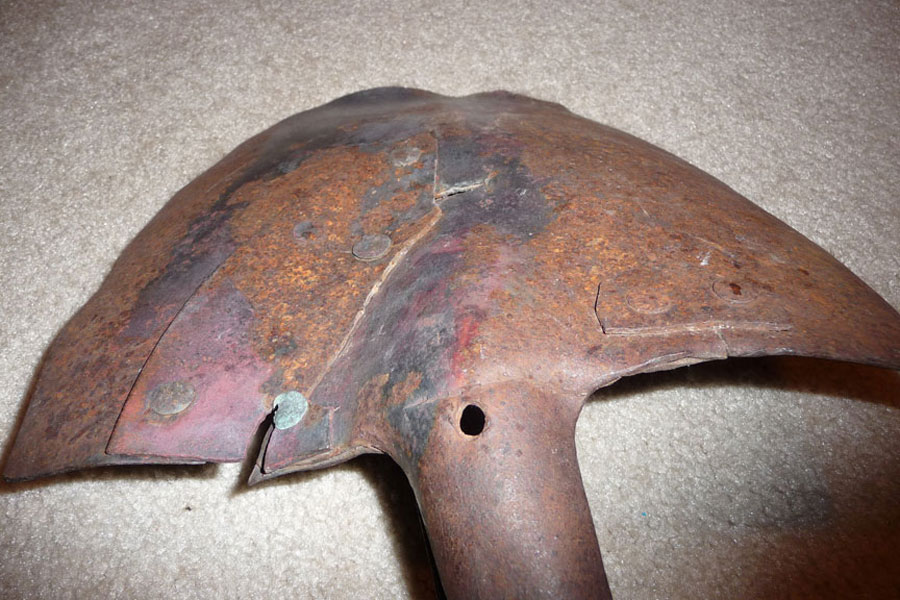EVOLUTION OF THE SHOVEL
By R. V. Larson
"He was a good man with a shovel." Not the epitaph many would want, but it's what "Old Bill" said he wanted.
It was 1958 and jobs were scarce, perhaps not as scarce as today, but you had to know how to use a shovel.
My first job after completing my military service was as a greens keeper at a nearby country club. The dirt and sand mix that was to be used to top dress golf greens had to be shoveled onto a trailer. Lots of hand work in those days. Old Bill paused to observe my work for a bit and made the following comment, "Bob, that's how I got my start." Now, what you must know to grasp what I then had to deal with, was that Old Bill was sixty five years old and I was just twenty one. Before I could process the implication of, does that mean if I do well I'll still be shoveling when I'm sixty five?, he added some of the kind of advice you would expect when the expert advises the newly hired hand. "Fill the front Bob, the back will take care of itself." The next thing he told me was that he wanted his epitaph to read "He was a good man with a shovel."
To write an article about a shovel some experience is required. I believe I am qualified having dug a shaft to a depth of seventy nine feet in search of a placer deposit. Now my digging activities are limited to spading up the vegetable garden and shoveling gravel into my highbanker. And yes! I would sink another shaft, but a better location will be needed. It would be nice if after seventy nine feet of digging there was some gold down there.
Now that most of you will agree that I've paid my dues, so to speak, let's consider this digging device now known as the shovel. My guess is that it was no complicated invention. Early man would have discovered that you can move more dirt with a wide stick than a narrow one. Metallurgy came along and the rest is history.
And so the shovel developed into a fine tool. However, this fine piece of equipment that all of us prospectors use has fallen into a pattern of regression that no longer provides the quality that we once took for granted. Have you handled one of the new shovels available on the market today and felt how heavy they are? It didn't take much effort for me to figure out what was going on. Here is what I know: The new shovels have thicker steel in the blade and thicker handles. My guess is that the quality of the steel once used for the blade so it could be thin, light and strong has become more expensive so they have gone to cheaper steel that has to be thicker to achieve the strength. Perhaps the wood they use today is less expensive too. It too is heavy and feels more like a club than a handle. Does this matter? Of course it does. I weighed my fine old shovel and one of the new ones. They look a lot alike but the new models weigh a pound more. My old shovel, 3 3/4 pounds. The new model 4 3/4 pounds. Now add eight pounds, which is a reasonable load for a shovel and we have 11 3/4 pounds verses 12 3/4 pounds. Each shovel full with one of these new shovels is a pound of wasted effort. If Tennessee Ernie's Big John had used one of these new shovels he would never have loaded sixteen tons of No. 9 coal. He could have only loaded fourteen and three quarter tons. I know, I ran the numbers.
So where do we go from here? Garage sales. You can still pick up fine quality shovels for next to nothing. A few weeks ago my wife and I were at such a garage sale. She asked me, "do you need another shovel?"
"I need this shovel", I replied.
The handle had more contour than anything on the market today. It was light weight and showed almost no wear. The price, $2.00. You too can find an old quality shovel that will enable you to run more material through your highbanker with less effort.
While on this topic I must ask. Have you seen those new shovels with a plastic handle? An acquaintance handed me one and asked what I thought of it. It felt like something you might use to fend off a charging beast, but not something a prospector would want to use or be seen with. I don't think I could have turned loose of it any quicker if it had rattles on one end and fangs on the other. And so my friends; Watch those garage sales and get one of those old high quality shovels. Don't face shame and ridicule when you are out there on the river bank by using something you can't be proud of.
Some of you have seen the old shovel in the picture. I had it on display some years back at the Salem Oregon gold show along with a note that read, "Evidence of hard times." Yes, those were hard times when you had to repair your broken shovel with metal from another broken shovel because a replacement wasn't economically feasible. I consider it remarkable good fortune to have found a relic with such a story to tell. I found it while staking a claim beside the Similkameen River in 1996. I have no idea what caused the damage to the straps that at one time attached to a handle, but that's not important. What is important is that this relic shows the ingenuity of those hardy souls who had survived by mining gold on our rivers during the great depression of the 1930's. Hard times? You bet they were! When circumstances required repairs such as you see pictured here, to have something to dig with, things were desperate. If this isn't evidence of hard times I don't know what would be. So when things look bleak, and they do for many of us now and then, it does help to consider what those old timers had to deal with back in their day. I feel honored to walk that same ground.

|

|

|

|

|